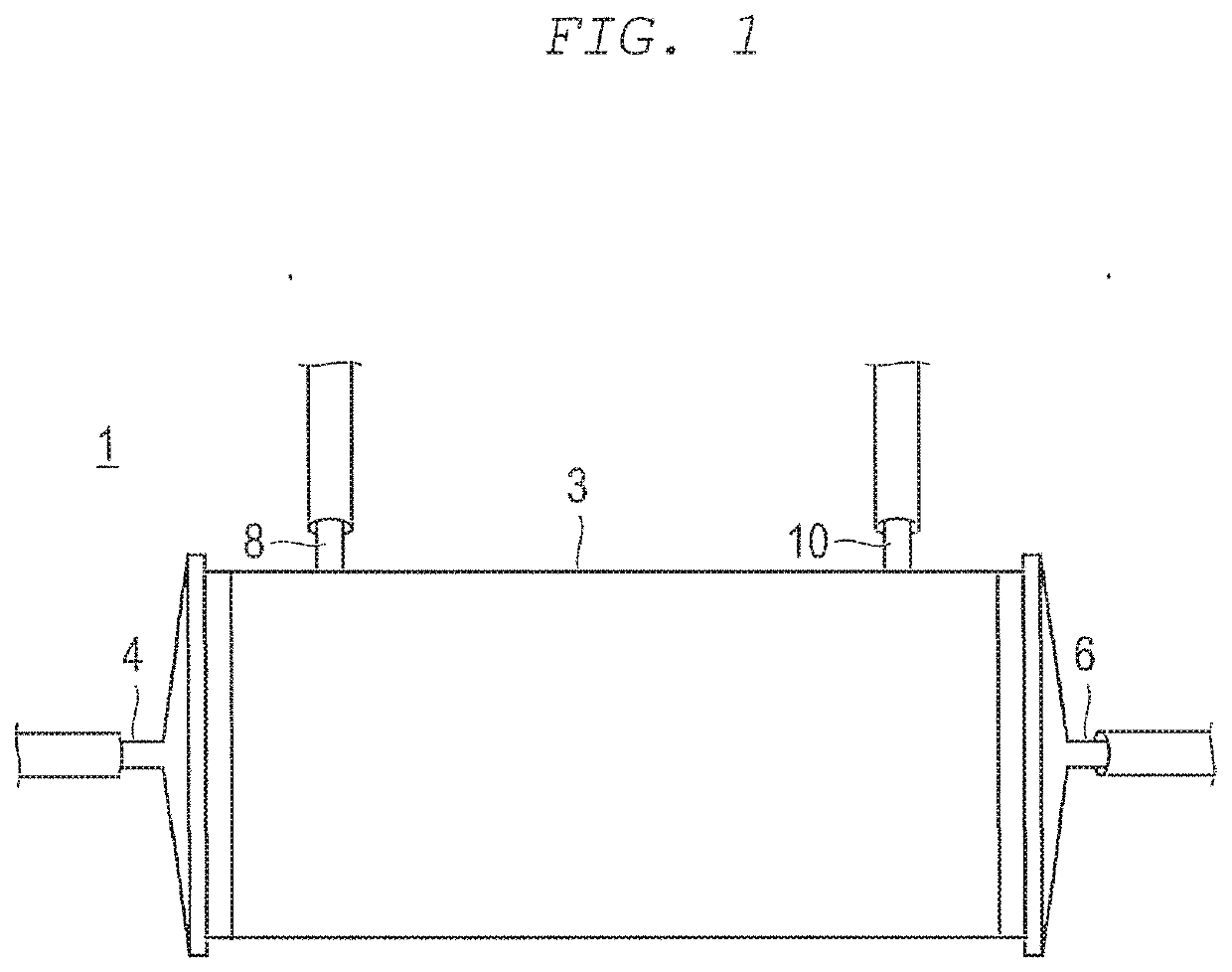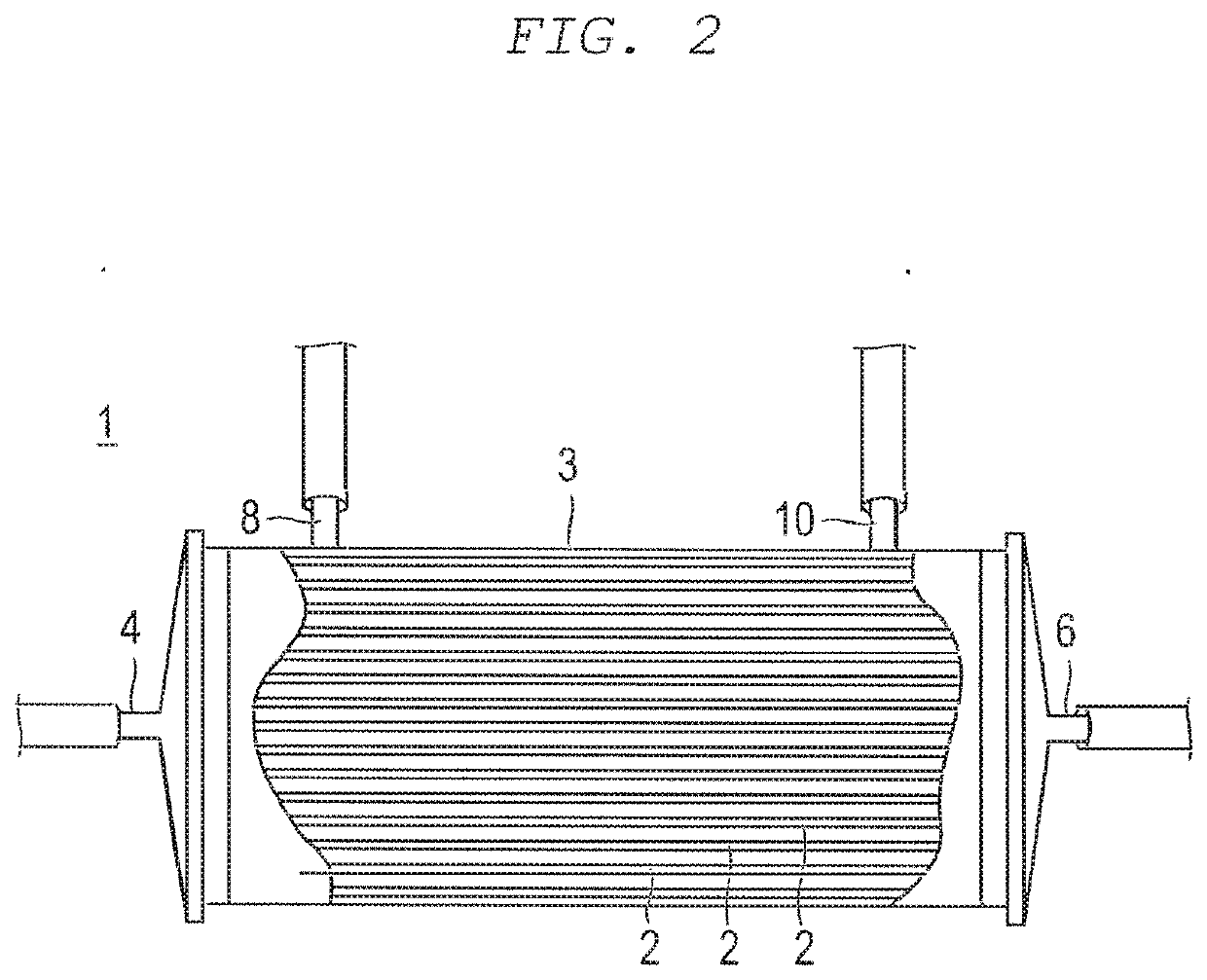Cell culture substrate having an acrylate structural unit and a monomer structural unit
- Summary
- Abstract
- Description
- Claims
- Application Information
AI Technical Summary
Benefits of technology
Problems solved by technology
Method used
Image
Examples
production example 1
er (1)
[0083]To a 20-ml glass pressure-proof test tube, 1.05 g (0.0073 mol) of carboxyethyl acrylate (CEA), 0.95 g (0.0073 mol) of hydroxyethyl methacrylate (HEMA), and 3 g of ethanol were added, and then nitrogen gas was bubbled for 10 seconds, thereby preparing a monomer solution (1). To this monomer solution (1), 0.004 g (0.013 mmol) of 2,2′-azobis(4-methoxy-2,4-dimethylvaleronitrile) as a polymerization initiator was added, and the resultant mixture was heated in a heat block set at 45° C. for 6 hours, to perform polymerization reaction, thereby obtaining obtain a polymerization liquid (1). This polymerization liquid (1) was added to 50 ml of n-hexane, and the precipitated polymer component was recovered and dried under reduced pressure, thereby obtaining a copolymer of carboxyethyl acrylate and hydroxyethyl methacrylate (CEA:HEMA=50:50 (molar ratio)) (copolymer (1)).
production example 2
er (2)
[0084]To a 20-ml glass pressure-proof test tube, 1.24 g (0.0086 mol) of carboxyethyl acrylate (CEA), 0.76 g (0.0058 mol) of hydroxyethyl methacrylate (HEMA), and 3 g of ethanol were added, and then nitrogen gas was bubbled for 10 seconds, thereby preparing a monomer solution (2). To this monomer solution (2), 0.004 g (0.013 mmol) of 2,2′-azobis(4-methoxy-2,4-dimethylvaleronitrile) as a polymerization initiator was added, and the resultant mixture was heated in a heat block set at 45° C. for 6 hours, to perform polymerization reaction, thereby obtaining a polymerization liquid (2). This polymerization liquid (2) was added to 50 ml of n-hexane, and the precipitated polymer component was recovered and dried under reduced pressure, thereby obtaining a copolymer of carboxyethyl acrylate and hydroxyethyl methacrylate (CEA:HEMA=60:40 (molar ratio)) (copolymer (2)).
production example 3
er (3)
[0085]To a 20-ml glass pressure-proof test tube, 1.63 g (0.0113 mol) of carboxyethyl acrylate (CEA), 0.37 g (0.0028 mol) of hydroxyethyl methacrylate (HEMA), and 3 g of ethanol were added, and then nitrogen gas was bubbled for 10 seconds, thereby preparing a monomer solution (3). To this monomer solution (3), 0.004 g (0.013 mmol) of 2,2′-azobis(4-methoxy-2,4-dimethylvaleronitrile) as a polymerization initiator was added, and the resultant mixture was heated in a heat block set at 45° C. for 6 hours, to perform polymerization reaction, thereby obtaining a polymerization liquid (3). This polymerization liquid (3) was added to 50 ml of n-hexane, and the precipitated polymer component was recovered and dried under reduced pressure, thereby obtaining a copolymer of carboxyethyl acrylate and hydroxyethyl methacrylate (CEA:HEMA=80:20 (molar ratio)) (copolymer (3)).
PUM
 Login to View More
Login to View More Abstract
Description
Claims
Application Information
 Login to View More
Login to View More - R&D
- Intellectual Property
- Life Sciences
- Materials
- Tech Scout
- Unparalleled Data Quality
- Higher Quality Content
- 60% Fewer Hallucinations
Browse by: Latest US Patents, China's latest patents, Technical Efficacy Thesaurus, Application Domain, Technology Topic, Popular Technical Reports.
© 2025 PatSnap. All rights reserved.Legal|Privacy policy|Modern Slavery Act Transparency Statement|Sitemap|About US| Contact US: help@patsnap.com



